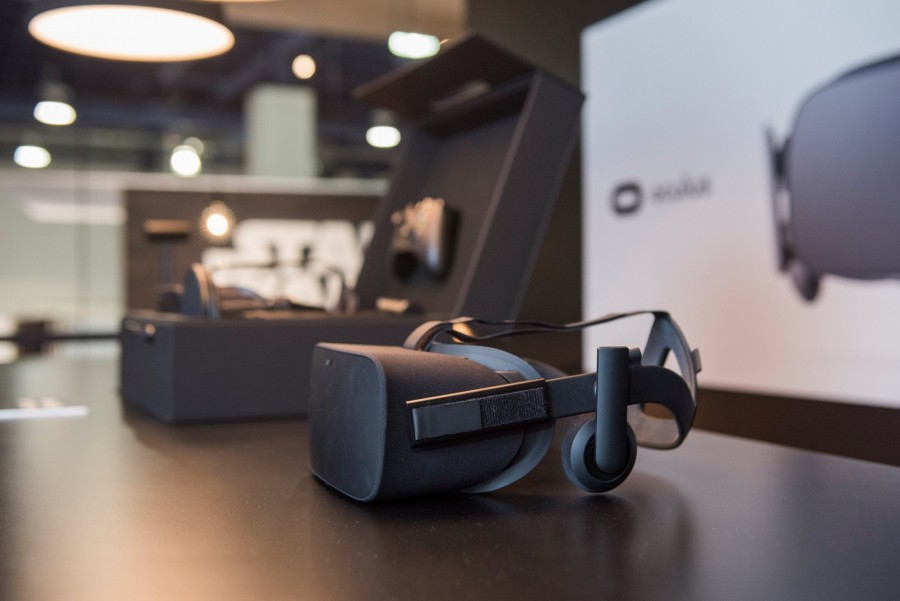NYU Leads Way in Virtual Reality Program
NYU is one of the first schools in the nation to offer classes on Virtual Reality gadgets such as the Oculus Rift.
February 16, 2016
While most students are bundling up trying to avoid the cold at all costs, one group of students are getting up early on Saturdays, jury-rigging four GoPros together, pursuing their passion.
At first glance, this contraption might seem ridiculous. But their ridiculousness is not without purpose. This group of 60 undergraduates is busy probing the bounds of digital media as part of a six hour masters class in Virtual Reality.
Led in partnership with Oculus as part of their Story Studio University program, the class takes 30 undergraduates from Tisch School of the Art’s film program and 30 from the game design program on a whirlwind tour of the cutting edge concepts and techniques in the field.
Virtual Reality, or VR, is a burgeoning and cross disciplinary field where the visual and performing arts meet hardware and computer science to create fully immersive experiences. NYU and the USC Cinema School were the first universities to participate in the program, which hinged not only on the intimate cooperation of the sponsors and university but also between the students themselves.
GSAS graduate student Sebastian Herscher is an investigator at NYU’s Media Research lab, where he works on Hologem, a 25 square foot arena where up to four people can share a virtual space through motion tracking cameras. Hercher said despite its immense narrative potential, virtual reality has its gives and takes.
“For example, you can’t move a user independently or they’ll get sick,” Herscher said. “But these constraints also force innovation and creative narrative design; we have to rethink tropes not replicable in VR.”
In just the last year the medium has matured greatly, winning its first Emmy for the film “Sleepy Hollow” by Secret Location studio in the category of user experience and visual design. Not only have VR techniques won critical acclaim, but they have also been used to great political effect by the U.N. in its film “Clouds Over Sidra,” which portrayed the first person experience of a young girl in a Syrian refugee camp. Along with the technologies’ unfolding narrative opportunities are its economic ones. Sector intelligence firm Digi-capital projected a $120 billion market for VR by 2020.
Yet despite tremendous growth, VR is still a relatively new medium. The company is ambitiously cultivating VR content and the next generation of creators.
Professor of film and television at Tisch Jonathan Weinstein said although VR is still in its infancy, it’s a new frontier in narrative storytelling that has generated significant student interest. Weinstein was instrumental in bringing the program to campus in a relatively short time frame.
“Talks with Oculus began in November and we had to finalize things quickly so they could announce at Sundance Film Festival,” Weinstein said. “VR emphasises shared experience and this collaborative education leads to shared success.”
A version of this story appeared in the Tuesday, Feb. 16 print issue. Email Stephen Malkowicz at [email protected].



























































































































































